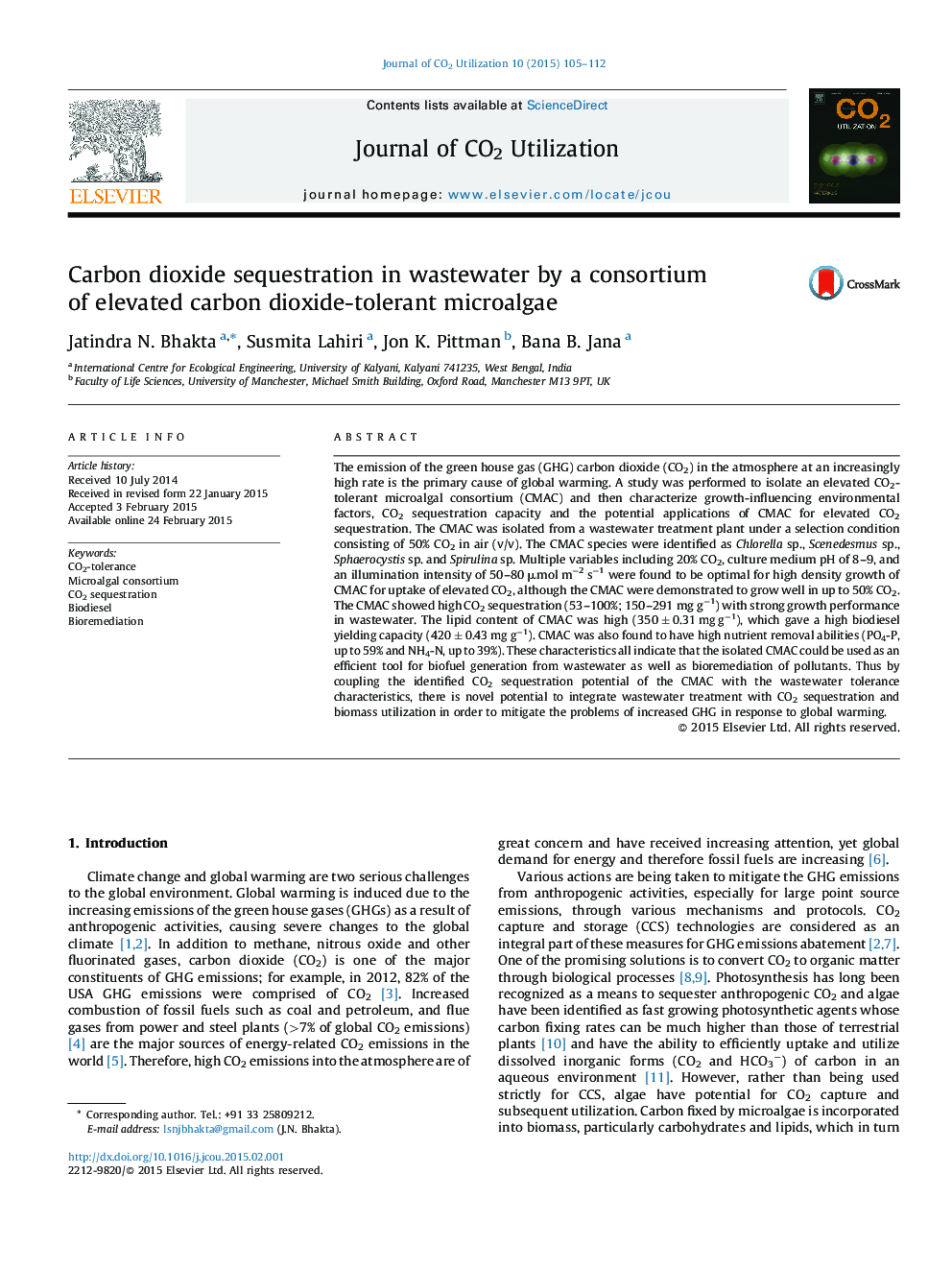| کد مقاله | کد نشریه | سال انتشار | مقاله انگلیسی | نسخه تمام متن |
|---|---|---|---|---|
| 63568 | 48225 | 2015 | 8 صفحه PDF | دانلود رایگان |
• CO2 sequestration of CO2-tolerant microalgal consortium (CMAC) was examined.
• Chlorella, Scenedesmus, Sphaerocystis and Spirulina species were identified as CMAC.
• Growth influencing conditions were optimized for elevated CO2 sequestration.
• CMAC showed high CO2 sequestration capacity in wastewater.
• Lipid and biodiesel yield and nutrient bioremediation capacities of CMAC were high.
The emission of the green house gas (GHG) carbon dioxide (CO2) in the atmosphere at an increasingly high rate is the primary cause of global warming. A study was performed to isolate an elevated CO2-tolerant microalgal consortium (CMAC) and then characterize growth-influencing environmental factors, CO2 sequestration capacity and the potential applications of CMAC for elevated CO2 sequestration. The CMAC was isolated from a wastewater treatment plant under a selection condition consisting of 50% CO2 in air (v/v). The CMAC species were identified as Chlorella sp., Scenedesmus sp., Sphaerocystis sp. and Spirulina sp. Multiple variables including 20% CO2, culture medium pH of 8–9, and an illumination intensity of 50–80 μmol m−2 s−1 were found to be optimal for high density growth of CMAC for uptake of elevated CO2, although the CMAC were demonstrated to grow well in up to 50% CO2. The CMAC showed high CO2 sequestration (53–100%; 150–291 mg g−1) with strong growth performance in wastewater. The lipid content of CMAC was high (350 ± 0.31 mg g−1), which gave a high biodiesel yielding capacity (420 ± 0.43 mg g−1). CMAC was also found to have high nutrient removal abilities (PO4-P, up to 59% and NH4-N, up to 39%). These characteristics all indicate that the isolated CMAC could be used as an efficient tool for biofuel generation from wastewater as well as bioremediation of pollutants. Thus by coupling the identified CO2 sequestration potential of the CMAC with the wastewater tolerance characteristics, there is novel potential to integrate wastewater treatment with CO2 sequestration and biomass utilization in order to mitigate the problems of increased GHG in response to global warming.
Figure optionsDownload as PowerPoint slide
Journal: Journal of CO2 Utilization - Volume 10, June 2015, Pages 105–112
